Are you curious about NiFe50 powder and how it’s used in modern engineering and manufacturing processes? Maybe you’ve heard of it but don’t quite know what it is or what makes it so special. Well, you’re in the right place! In this article, we’ll explore NiFe50 powder in great detail, breaking it down into its composition, characteristics, and many other fascinating aspects.
Let’s take a closer look at why NiFe50 powder is gaining so much attention in various industries, and how this metal powder, among others, is transforming modern technology.
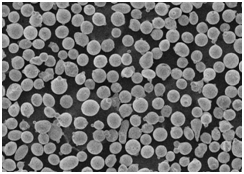
Overview of NiFe50 Powder
NiFe50 powder, an alloy primarily composed of nickel (Ni) and iron (Fe), has been engineered for use in a wide range of industries, including aerospace, automotive, and electronics. Its most significant feature? Its excellent magnetic properties and corrosion resistance. With a 50/50 composition of nickel and iron, this powder offers high permeability, low coercivity, and impressive electromagnetic shielding. But that’s just scratching the surface—NiFe50 is much more versatile than it seems.
In the sections to follow, we will dive deeper into everything you need to know about NiFe50 powder, from its characteristics to its many applications.
Composition of NiFe50 Powder
Understanding the composition of NiFe50 powder is key to unlocking its potential. As the name suggests, this powder consists of 50% nickel and 50% iron, but there’s more to it than just these two elements. Let’s break down the specifics:
| Component | Percentage | Role in the Alloy |
|---|---|---|
| Nickel (Ni) | 50% | Provides corrosion resistance, toughness, and magnetism. |
| Iron (Fe) | 50% | Enhances magnetic properties and overall strength. |
| Other Trace Elements | <0.1% | Can include carbon, sulfur, and phosphorus, which may influence specific mechanical properties. |
Nickel is known for its corrosion resistance and durability, while iron contributes to strength and magnetic characteristics. Combined, these elements create a versatile and powerful powder that’s ideal for a wide array of applications.
Characteristics of NiFe50 Powder
So, what makes NiFe50 powder stand out? It’s all about its magnetic properties and mechanical strength. Here’s a detailed breakdown:
| Characteristic | Description |
|---|---|
| Magnetic Permeability | High magnetic permeability, making it ideal for electromagnetic shielding applications. |
| Coercivity | Low coercivity, allowing the material to demagnetize easily. |
| Corrosion Resistance | The nickel content provides strong resistance against corrosion in challenging environments. |
| Density | Relatively dense compared to other powders, contributing to its strength in structural applications. |
| Thermal Conductivity | Moderate thermal conductivity, ideal for use in electronics where heat management is crucial. |
| Electrical Conductivity | Lower than other metal powders, suitable for reducing electromagnetic interference. |
One key advantage is that NiFe50 powder is both magnetically soft and corrosion-resistant, making it an excellent material for transformers, electric motors, and more.

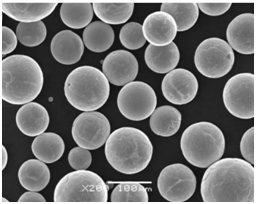
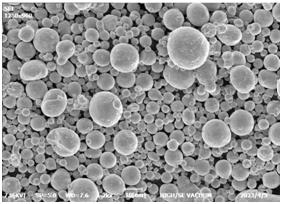
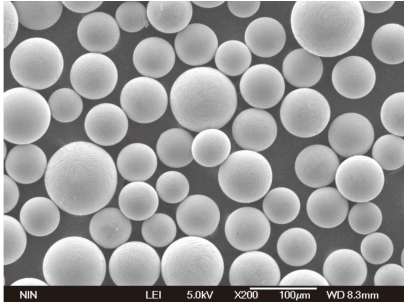
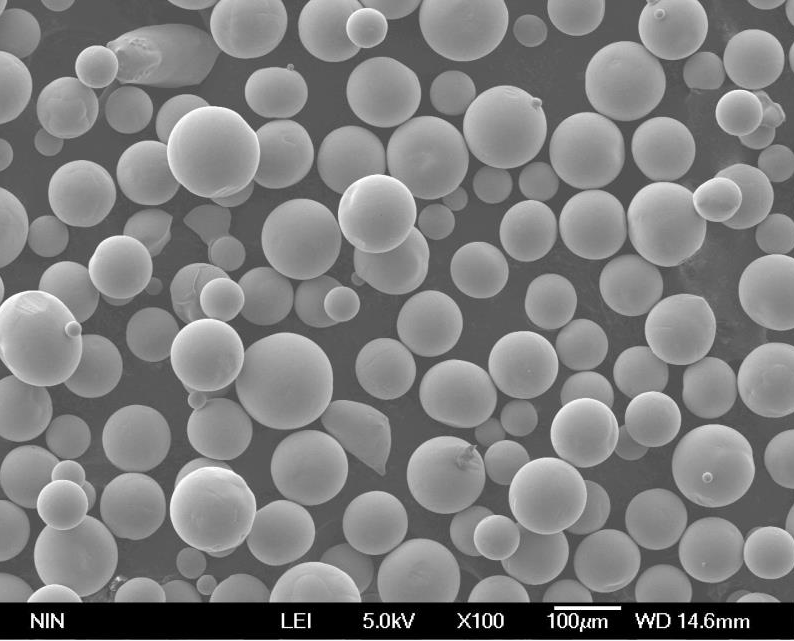
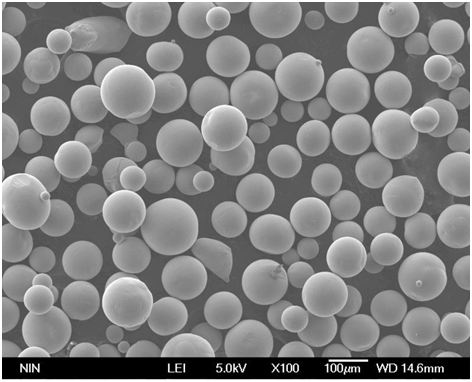
Specific Metal Powder Models
While NiFe50 is a popular alloy, various models are available to meet different industry needs. Let’s explore some of the most notable models:
| Metal Powder Model | Description |
|---|---|
| NiFe50-S | A finer particle size variant of NiFe50, offering smoother surface finishes in additive manufacturing and high-precision needs. |
| NiFe50-G | A granulated version, ideal for powder metallurgy processes that require a more uniform distribution of particles. |
| NiFe50-High Purity | This variant is produced with fewer impurities, making it a go-to for high-performance applications such as aerospace components. |
| NiFe50-C | The carbon-enhanced version, providing additional hardness and wear resistance for heavy-duty industrial applications. |
| NiFe50-HC | High-coercivity version designed for use in environments where a stronger magnetic field is necessary. |
| NiFe50-U | Ultrafine version, typically used in applications requiring excellent electromagnetic interference (EMI) shielding. |
| NiFe50-Nano | Nanopowder form, offering a larger surface area for enhanced reactivity in catalytic and chemical processes. |
| NiFe50-A | Used in additive manufacturing, this model offers excellent flowability and sintering properties for 3D printing applications. |
| NiFe50-EL | Electrically low-conductivity version, used in electronics for preventing electromagnetic interference. |
| NiFe50-Med Purity | A standard purity version, typically used in cost-sensitive applications where ultra-high performance is not critical. |
Each of these models comes with its own set of properties that make them suitable for specific tasks. For example, NiFe50-U is often chosen for EMI shielding, while NiFe50-High Purity might be better suited for aerospace components due to its reduced impurity content.
Applications of NiFe50 Powder
With its unique characteristics, NiFe50 powder has found its way into various fields. But what are these specific applications? Let’s break it down:
| Industry | Application |
|---|---|
| Aerospace | Used in turbine blades and other high-performance parts where strength and corrosion resistance are vital. |
| Automotive | Applied in electric motor components and as a material for high-efficiency fuel injectors. |
| Electronics | Essential in electromagnetic shielding for devices, reducing interference and improving performance. |
| Energy | Used in transformers and energy storage solutions thanks to its magnetic properties. |
| Medical Devices | Found in MRI machines due to its low coercivity and high permeability. |
| Powder Metallurgy | Utilized in sintering processes for manufacturing high-strength components. |
| Additive Manufacturing | Popular in 3D printing, where precision and strength are critical. |
The versatility of NiFe50 powder is apparent in industries ranging from medical devices to automotive. Its strength, durability, and magnetic properties make it an excellent choice for both structural and electronic applications.
Advantages of NiFe50 Powder
You might be wondering, “Why choose NiFe50 powder over other metal powders?” Let’s break down some of the top advantages:
| Advantage | Description |
|---|---|
| Magnetic Performance | Exceptional magnetic properties make it ideal for motors, transformers, and electronic shielding. |
| Corrosion Resistance | The nickel component ensures that it can resist corrosion even in harsh environments. |
| Versatility | Suitable for a wide range of industries, from aerospace to energy storage. |
| Strength and Durability | Offers impressive mechanical strength, allowing it to withstand high-stress applications. |
| Electromagnetic Interference | Effective in preventing electromagnetic interference, essential for modern electronic devices. |
Advantages of NiFe50 vs. Other Metal Powders
When compared to other metal powders such as pure nickel or iron powders, NiFe50 stands out because of its balanced properties. For example, while pure nickel may offer better corrosion resistance, it lacks the strong magnetic performance that NiFe50 provides. On the other hand, while iron powders offer magnetic strength, they often suffer from corrosion in comparison to NiFe50. Therefore, NiFe50 offers the best of both worlds.
Specifications and Standards for NiFe50 Powder
Looking to purchase NiFe50 powder? It’s essential to understand the specifications and standards associated with this material to ensure you’re getting the right product for your application.
| Specification | Description |
|---|---|
| Particle Size | Available in sizes ranging from fine powder (under 10 microns) to larger granules (over 100 microns). |
| Purity | Typically ranges from 98% to 99.9% depending on the application and manufacturer. |
| Density | Usually between 8.4 and 8.9 g/cm³, depending on the specific composition. |
| Packaging | Supplied in vacuum-sealed containers to prevent oxidation. |
| Grade Standards | Follows industry standards such as ASTM, DIN, and ISO for material composition and quality. |
These specifications are crucial when selecting the right NiFe50 powder for your project. Whether you need a higher-purity version or a specific particle size, these parameters should guide your purchase.
Suppliers and Pricing of NiFe50 Powder
Now that you understand the characteristics and uses of NiFe50 powder, where can you buy it, and what should you expect to pay? Here’s a look at some reputable suppliers:
| Supplier | Price Range (per kg) | Location | Available Models |
|---|---|---|---|
| American Elements | $150 – $250 | United States | NiFe50-High Purity, NiFe50-S |
| Metal Powder Company (MEPCO) | $100 – $200 | India | NiFe50-G, NiFe50-C |
| Goodfellow | $120 – $220 | United Kingdom | NiFe50-U, NiFe50-A |
| Nanografi | $200 – $300 | Turkey | NiFe50-Nano |
| Stanford Advanced Materials | $140 – $260 | United States | NiFe50-EL, NiFe50-HC |
Pricing varies depending on factors like particle size, purity, and the specific model you’re purchasing. For more specialized versions like NiFe50-Nano, you’ll likely see higher prices due to the complexity of production.
Comparison: NiFe50 vs. Other Metal Powders
How does NiFe50 powder compare to other metal powders on the market? Let’s put it up against some common alternatives:
| Property | NiFe50 Powder | Nickel Powder | Iron Powder |
|---|---|---|---|
| Magnetic Performance | High | Moderate | High |
| Corrosion Resistance | Excellent | Excellent | Poor |
| Cost | Moderate | High | Low |
| Applications | Electromagnetic shielding, electric motors, transformers | Aerospace, electronics | Structural, basic metallurgy |
| Electrical Conductivity | Low | High | Low |
In most cases, NiFe50 powder offers a unique balance of properties that makes it preferable to pure nickel or iron powders, particularly for applications requiring both magnetic performance and corrosion resistance.
Pros and Cons of NiFe50 Powder
When deciding whether NiFe50 powder is the right material for your project, it’s essential to weigh the pros and cons. Here’s a quick rundown:
| Pros | Cons |
|---|---|
| Excellent magnetic properties | Higher cost than basic iron powders |
| Good corrosion resistance | Not as electrically conductive as other metals |
| Versatile for various applications | Can be difficult to source in some regions |
| High strength and durability | Specialized models like NiFe50-Nano are expensive |
Overall, the benefits of NiFe50 powder far outweigh the drawbacks for most applications, especially when magnetic properties and corrosion resistance are priorities.
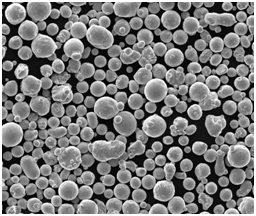
FAQs
| Question | Answer |
|---|---|
| What is NiFe50 powder used for? | NiFe50 powder is used in industries like aerospace, automotive, electronics, and energy for magnetic shielding and structural applications. |
| What makes NiFe50 powder magnetic? | The combination of nickel and iron, both ferromagnetic metals, gives NiFe50 powder its magnetic properties. |
| Is NiFe50 powder expensive? | It’s moderately priced, with higher costs for specialized versions like NiFe50-Nano or NiFe50-High Purity. |
| How does NiFe50 compare to pure nickel powder? | NiFe50 offers better magnetic performance than pure nickel powder but slightly lower corrosion resistance. |
| Can NiFe50 powder be used in 3D printing? | Yes, especially versions like NiFe50-A, which are designed for additive manufacturing processes. |
Conclusion
NiFe50 powder is a versatile and powerful material, combining the best properties of nickel and iron into one alloy. Whether you’re looking for something with exceptional magnetic performance, corrosion resistance, or strength, NiFe50 offers a balanced solution for a wide range of applications. From aerospace to electronics and even medical devices, NiFe50 powder is a key player in the world of metal powders.
With a wide variety of models available, there’s a version of NiFe50 powder for just about every need. Keep the specifications, costs, and applications in mind as you make your decision—and remember, NiFe50 stands up against other metal powders in unique ways that might just make it the best choice for your next project.

